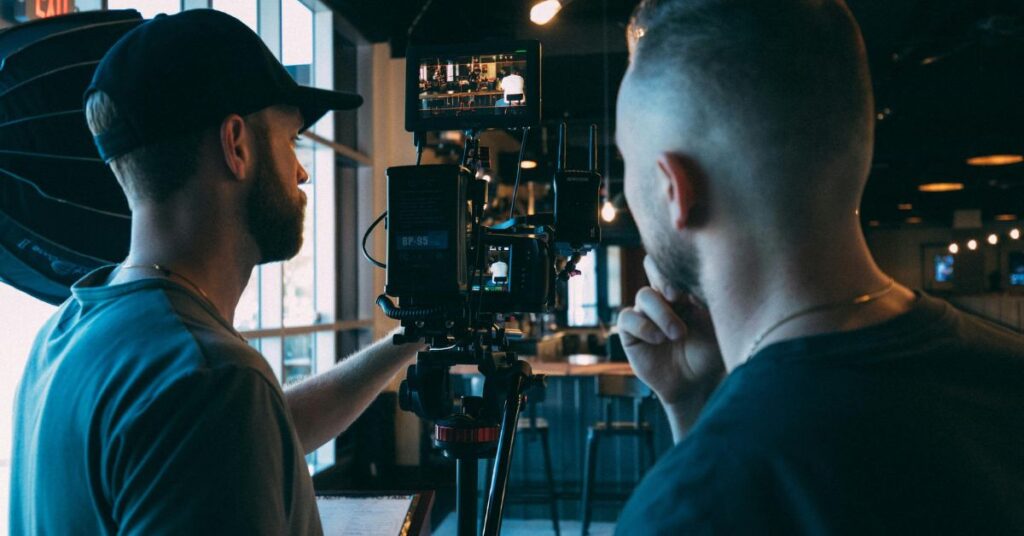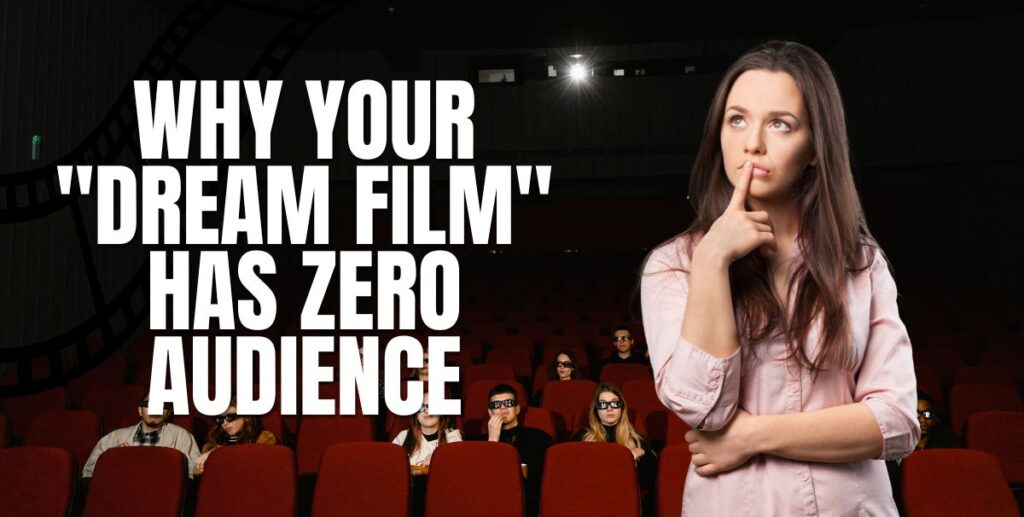Picture this: You’ve just finished your indie film masterpiece. Every frame tells your story perfectly, the acting is flawless, and your friends can’t stop raving about it. Yet when you release it to the world, something devastating happens—silence. No views, no shares, no sales. Sound familiar?
This heartbreaking scenario plays out for countless independent filmmakers every year. According to industry research, over 95% of independent films fail to recoup their investment, not because they’re poorly made, but because they never found their audience. Here’s the brutal truth: creating a great film is only half the battle. The other half? Knowing exactly who will watch it before you even pick up the camera.
In this comprehensive guide, you’ll discover the seven essential steps that successful indie filmmakers use to identify, connect with, and convert their target audience into loyal supporters. By the end, you’ll have a bulletproof strategy that transforms your artistic vision into commercial success.
Why Most Independent Films Fail: The Audience Blind Spot
The Coffee Shop Analogy That Changes Everything
Imagine investing your life savings into opening the most beautifully designed coffee shop in the world. Perfect espresso machines, Instagram-worthy décor, exceptional baristas—everything flawless. There’s just one problem: you built it in the middle of a desert where no one lives.
This scenario mirrors what happens to most independent films. Filmmakers pour their hearts, souls, and bank accounts into creating exceptional content, only to discover there’s no audience waiting to watch it. The issue isn’t quality—it’s market research.
The Artistic Integrity vs. Commercial Viability Dilemma
Many indie filmmakers resist the idea of considering their audience, fearing it will compromise their artistic vision. This mindset creates a false dichotomy. The most successful independent filmmakers understand that knowing your audience doesn’t limit creativity—it enhances it by providing clear direction and purpose.
Consider this: even Pixar, known for their artistic excellence, meticulously researches their target demographics before developing storylines. They understand that connection amplifies art, not diminishes it.
Step 1: Master the “100-Seat Cinema Game”
Here’s a powerful thought experiment that will revolutionize how you think about your audience:
The Scenario: You’ve completed your film and booked a 100-seat theater. Your challenge is to fill every seat with people who aren’t friends or family. At the end of your screening, each person rates your film 1-5 stars. If everyone gives you 5 stars, you win one million dollars.
The Question: Who do you put in those seats?
Your answer reveals your true audience—your “bullseye.” This isn’t about demographics; it’s about finding people who will genuinely connect with your story on a deep emotional level.
Why the Bullseye Method Works
The bullseye method succeeds because it forces specificity. Instead of trying to appeal to everyone (which appeals to no one), you identify a core group of passionate viewers who become your film’s champions. These advocates naturally spread the word, creating organic marketing that money can’t buy.

Step 2: Get Hyper-Specific Beyond Demographics
Saying your audience is “young people aged 20-35” is like saying your target market is “humans who breathe.” It’s meaningless because everyone targets that demographic—gyms, fashion brands, dating apps, and car companies.
The Specificity Formula
Replace broad demographics with laser-focused psychographics:
Instead of: “Young adults interested in horror” Try: “Urban millennials who binge true crime podcasts and follow horror influencers on TikTok”
Instead of: “Parents with children” Try: “First-time moms in suburban areas who are obsessed with child development and safety products”
This specificity transforms your entire approach. When you know your audience deeply, every decision—from script choices to marketing channels—becomes crystal clear.
Step 3: Choose Your Path – Audience-First or Idea-First
Both approaches work, but they require different strategies:
The Audience-First Approach
Start by identifying an underserved community with specific needs, interests, or challenges. Research what content gaps exist for this group, then develop a film concept that fills that void.
Example: Discovering that there’s limited content for second-generation immigrants struggling with cultural identity, then creating a film specifically addressing this experience.

The Idea-First Approach
If you already have a compelling story, dive deep into researching who would genuinely care about it. Don’t assume that because you’re passionate about the topic, others will be too.
Example: You’ve written a script about competitive chess. Your research reveals that your core audience isn’t just chess players, but also parents of gifted children and fans of underdog sports stories.
Step 4: Conduct Strategic Audience Research
Before writing a single scene, investigate everything about your bullseye audience:
- Content consumption habits: What do they watch, where, and when?
- Pain points and desires: What problems keep them up at night?
- Online behavior: Which platforms do they use? What do they share?
- Spending patterns: How much do they invest in entertainment?
- Influencers and communities: Who do they trust and follow?
This research transforms guesswork into strategy. Instead of throwing your trailer into the digital void and hoping for the best, you’ll know exactly where and how to reach your ideal viewers.
Research Tools and Techniques
- Social media listening: Monitor hashtags and communities relevant to your theme
- Survey potential viewers: Create polls and questionnaires for your target demographic
- Analyze similar content: Study what’s working for films in your genre
- Join online communities: Participate in forums, Facebook groups, and subreddits where your audience gathers

Step 5: Align Your Story with Audience Desires
Once you understand your audience deeply, you face a crucial decision: adapt your story to better serve them, or find a different audience that aligns with your current vision.
The Connection Framework
Ask yourself these questions:
- Does my story address a real need or desire my audience has?
- Are the characters relatable to my target viewers?
- Does the tone and style match what my audience enjoys?
- Will my ending satisfy their expectations while still surprising them?
Remember, this isn’t about compromising your artistic vision—it’s about ensuring your vision resonates with people who matter to you.
Step 6: Develop Your Distribution Strategy Early
Understanding your audience revolutionizes how you approach distribution. Different audiences consume content differently:
- Gen Z viewers might prefer short-form teasers on TikTok before watching on streaming platforms
- Documentary enthusiasts often discover films through film festivals and educational institutions
- Horror fans engage heavily with community forums and genre-specific platforms
Platform-Specific Strategies
Streaming Platforms: Focus on keyword optimization and thumbnail design that appeals to your specific audience
Film Festivals: Target festivals that cater to your genre and audience demographic
Direct Sales: Consider selling directly to your audience through your own website or community platforms
Educational Markets: If your film has educational value, reach out to schools, libraries, and training organizations

Step 7: Transform Viewers into Community Members
Your audience isn’t just customers—they’re potential community members who can support your entire filmmaking career.
Building Long-Term Relationships
- Create behind-the-scenes content that gives your audience exclusive access to your process
- Engage directly through social media, email newsletters, and live streams
- Ask for feedback on future projects and actually implement their suggestions
- Offer value beyond entertainment through educational content, resources, or community building
The Compound Effect
When you consistently serve a specific audience, each film builds on the success of the previous one. Your audience grows with you, funding future projects through pre-orders, crowdfunding, and word-of-mouth marketing.
The Mindset Shift That Changes Everything
The most successful independent filmmakers understand a fundamental truth: they’re not just artists hoping someone will listen—they’re storytellers who know exactly who’s ready to hear them.
This shift from “expression” to “connection” transforms every aspect of your filmmaking process:
- Writing becomes more focused because you know who you’re writing for
- Marketing becomes more effective because you understand your audience’s preferences
- Distribution becomes strategic because you know where your audience spends time
- Monetization becomes sustainable because you’re serving real demand
Your Next Steps: From Passion Project to Profitable Film
The difference between a passion project and a profitable film isn’t budget size—it’s clarity, intention, and strategy. By following these seven steps, you’re not abandoning your artistic vision; you’re ensuring it reaches the people who will value it most.
Here’s your action plan:
- Complete the 100-seat cinema exercise and identify your bullseye audience
- Get specific about who they are beyond basic demographics
- Choose your approach (audience-first or idea-first) and commit to it
- Conduct thorough research before writing your script
- Align your story with your audience’s needs and desires
- Plan your distribution strategy based on your audience’s habits
- Focus on community building from day one
Remember, every successful filmmaker started exactly where you are now. The difference between those who make it and those who don’t isn’t talent or luck—it’s the willingness to think strategically about audience from the very beginning.
Your story deserves to be seen by people who will love it. By following this guide, you’re not just making a film—you’re building a sustainable filmmaking career that serves both your artistic vision and your audience’s deepest needs.

Ready to dive deeper into advanced filmmaking strategies and audience development techniques? Watch our comprehensive video breakdown of these concepts and discover additional insights that didn’t make it into this article. You’ll find the link to our YouTube channel below this article, where we share weekly content designed to help independent filmmakers transform their passion into profit.
Don’t forget to subscribe for exclusive behind-the-scenes content, case studies from successful indie filmmakers, and actionable strategies you can implement immediately. Your filmmaking journey deserves the support of a community that understands your challenges and celebrates your successes.

